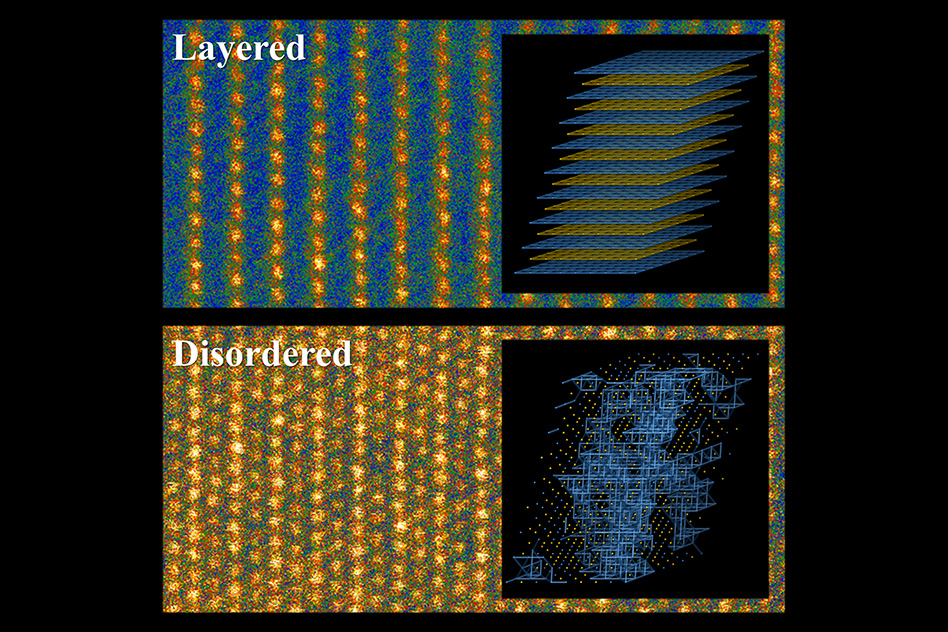Unlocking the Potential of Cation-Disordered Oxides for Rechargeable Lithium Batteries
In today’s lithium batteries, those cathodes are usually made of an orderly crystalline material, sometimes in a layered structure. When slight deviations from that perfect order are introduced, the battery’s efficiency generally goes down — so disordered materials have mostly been ignored in the search for improved battery materials.
But it turns out this correlation is far from universal: Certain kinds of disorder can provide a significant boost in cathode performance, the researchers have found through a combination of computer modeling and laboratory experiments. These surprising findings are reported this week in the journal Science, in a paper by MIT graduate student Jinhyuk Lee, professor of materials science and engineering Gerbrand Ceder, and four others.

Conventional layered lithium and transition metal cathode material (top) and the new disordered material studied by researchers at MIT (bottom) as seen through a scanning tunneling electron microscope. Inset images show diagrams of the different structures in these materials. (In the disordered material, the blue lines show the pathways that allow lithium ions to traverse the material.)
Links
You can read the full news article here:
http://web.mit.edu/newsoffice/2014/disordered-materials-hold-promise-for-better-batteries-0109.html
or download the Sciencexpress report from this link (requires access):
http://www.sciencemag.org/content/early/2014/01/08/science.1246432

Jon Fold von Bülow
Jon Fold von Bülow recieved his Cand. Scient. in Nanoscience from University of Copenhagen in 2011 and is currently working with upscaling Li- and Na-ion battery materials to the 100+ kg scale for Haldor Topsøe A/S.
Jon's main interest lies in energy technologies for the future and he started working with fusion energy at Risø National Laboratory for Sustainable Energy. He has since developed a growing interest in technologies that are closer to potential industrial application. He is a highly dedicated academic as well as a very active professional and have initiated and participated in many different projects.
His studies within nanotechnological material science and affiliation with Risø National Laboratories has taken him to Germany, China and the US, where he has collaborated independently with several international research groups. He has so far succeeded in pushing two academic projects to industrial application, first with the Danish company Coloplast A/S and recently with a California-based battery start-up – an invention that is currently being US patented.
Jon has conducted most of his work on Li-batteries in the facilities of California NanoSystems Institute (CNSI) as a research scholar at UCSB-MIT-Caltech Institute for Collaborative Biotechnologies (ICB). The manganese based cathode materials he fabricated during this period were all tuned for high-power applications and covers synthesis of various manganese oxides from solution, molten and solid states.
Permanent link to this article: http://batteriselskab.dk/nyheder/unlocking-the-potential-of-cation-disordered-oxides-for-rechargeable-lithium-batteries.htm

